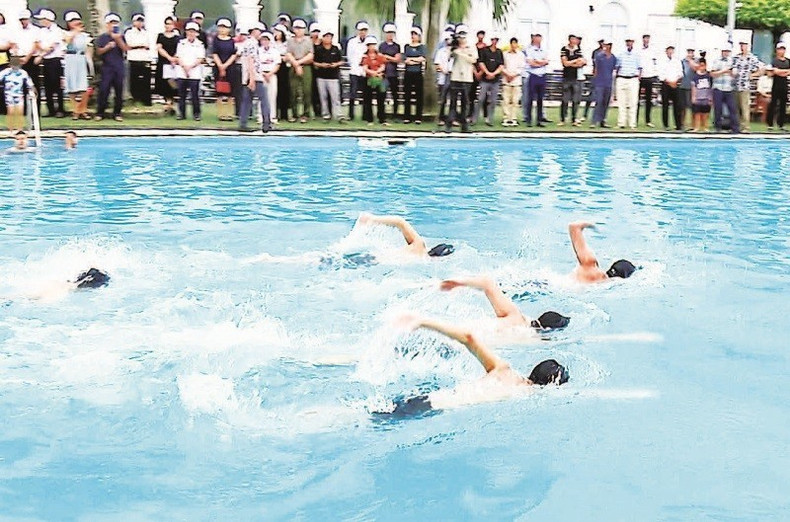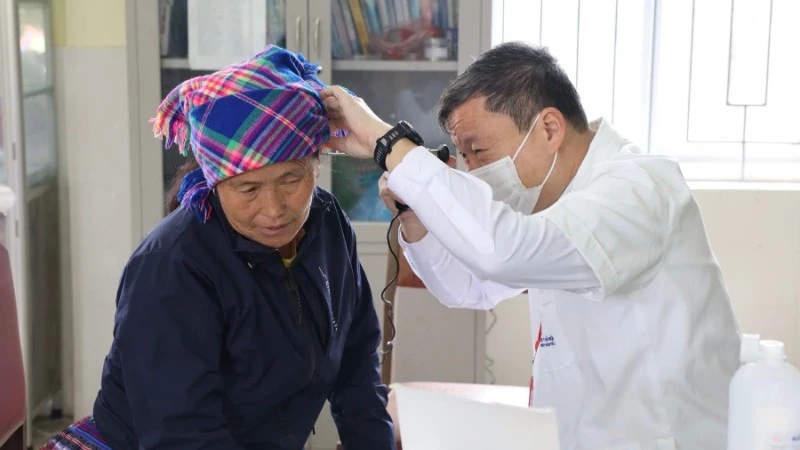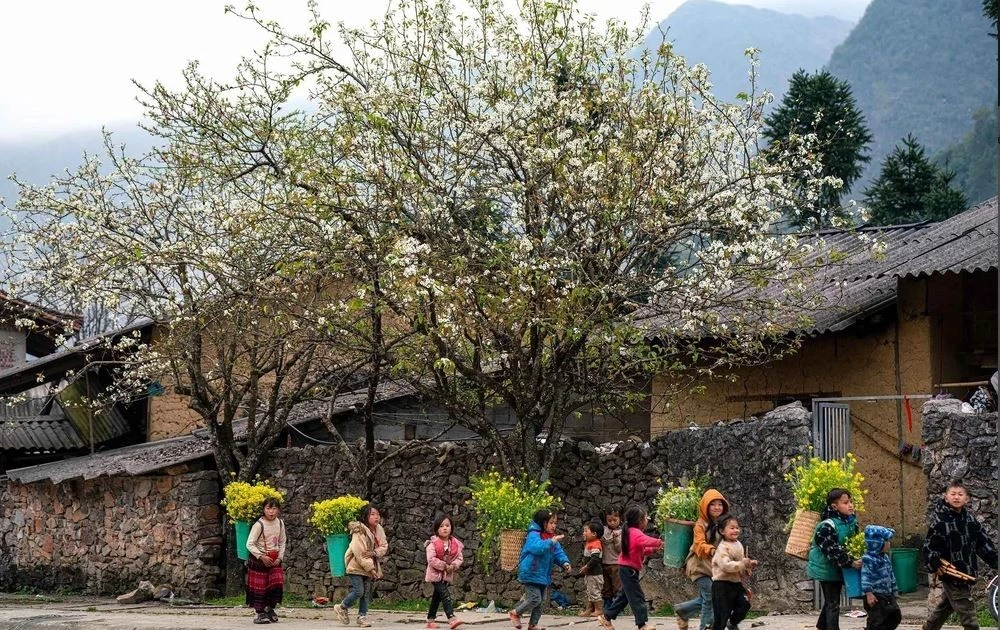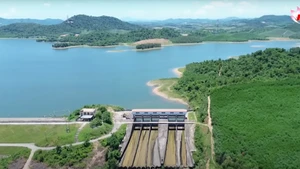Drowning is a health burden at the global level
According to a report by the World Health Organization (WHO), in the past decade, drowning has caused more than 3 million deaths worldwide. Drowning is a significant threat to the lives of children and adolescents, ranked as the third leading cause of death for children aged 5 to 14 and the fourth leading cause of death for children aged 1–4. Notably, 92% of drowning cases occur in low- and middle-income countries, with the drowning rate in low-income countries being 3.2 times higher than in high-income countries.
In Viet Nam, in recent years, although the rate of child deaths due to drowning has decreased by 3-5%, an average of 1,900 children still die from drowning each year. The rate of child deaths due to drowning in the country is eight times higher than in high-income countries. 76.6% of drowning cases occur in the community, 22.4% occur at home, and only 1% occur at schools. Summer is often the peak season for child drowning cases, especially in rural areas with numerous rivers, streams, and lakes.
This demonstrates that drowning remains one of the leading causes of death among children and adolescents in Viet Nam. In recent times, a series of drowning-related deaths have not only left huge mental scars for the victims’ families but also sounded the alarm about the public health crisis caused by the lack of skills to defend and survive in the aquatic environment.
According to Dr. Duong Khanh Van, a technical officer from the World Health Organization (WHO) in Viet Nam, drowning predominantly impacts children and young people and more than nine in ten deaths occur in low and middle-income countries, drowning is a health burden at the global, regional and national levels, especially in children aged 1–14.
Drowning, however, is entirely preventable through the implementation of evidence-based, cost-effective approaches. To prevent drowning, WHO has recommended four strategies and six interventions, focusing on ensuring strong national mechanisms for a coordinated and effective approach to addressing drowning, while the interventions promote community action.
The four strategies include: encouraging multi-sectoral coordination; raising public awareness of drowning prevention through strategic communication; establishing a national waterway safety plan; researching child drowning prevention through data collection and systematic research.

Meanwhile, six drowning prevention interventions include: creating safe spaces away from water sources for preschool-aged children; creating barriers to control children’s access to water sources; teaching swimming and water safety skills for children of primary school age and above; training people in rescue and first aid skills; developing and enforcing regulations on waterway traffic safety.
Equipping skills combined with promoting communications to raise awareness
In Viet Nam, a number of documents guiding drowning prevention for children have been issued, such as: Decision No.1248/QD-TTg, dated July 19, 2021, of the Prime Minister on approving the Programme on prevention and control of child accidents and injuries for the 2021–2030 period; inter-sectoral plan on child drowning prevention for the 2022–2030 period (Plan No.411/KHLN-TE-MT-ATGT-C07-TCTDTT-TCPCTT-HDĐTW-ĐCT-BXH dated July 25, 2022)...
In particular, in recent times, in order to raise awareness of the burden of drowning and effective interventions for local authorities as well as people, the Campaign For Tobacco-Free Kids (US) has implemented a drowning prevention programme for Vietnamese children.
Doan Thu Huyen, Country Director of Campaign for Tobacco-Free Kid in Viet Nam shared experiences in implementing the drowning prevention programme for Vietnamese children since 2017. Huyen pointed out the current situation of drowning in Vietnamese children in recent times and also proposed many effective solutions to address this situation.
In which she especially emphasised the model of “Safe swimming – Vaccine to prevent drowning for children”. With only about 30 USD per child–for instructors, supervisors, organisations, swimming pool infrastructure–a child can be completely equipped with safe swimming skills to protect themselves, thereby significantly reducing the risk of death caused by drowning.
She added that the programme has been implemented in 112 communes of 10 provinces and cities across the country, including many areas in remote areas with difficult access, with 24% being poor and very poor households, 40–50% of parents and caregivers do not know about safe swimming and how to supervise children under 6 years old.
Huyen also emphasised the encouraging results in the process of implementing the programme in Viet Nam: 2,250 staff were trained to improve their capacity in child drowning prevention; 908 instructors were trained in safe swimming; 1,096 instructors were trained in safety skills; 52,204 children aged 6-15 were taught safe swimming; 52,250 children aged 6-15 were taught safety skills; 30,204 parents, caregivers, preschool teachers received training in drowning prevention among children. The rate of children aged 6-15 who know how to swim safely in the intervention area has increased significantly compared to before.
Along with equipping children with drowning prevention skills, raising awareness across all of society also plays an extremely important role. In particular, communication work is considered the “key” to motivate communities to actively participate in preventing and combating drowning, especially for children.
Dang Hoa Nam, Vice President of the Vietnam Association for the Protection of Children’s Rights, Former Director of the Department of Children, said that in addition to conveying essential information, the press and media also play a particularly important role in orienting public opinion and guiding actions.
Therefore, the media needs to focus on strongly spreading the message about the importance of protecting children from the drowning risk, considering this an essential part of ensuring children's right to live safely, he said, adding that messages such as “Preventing child drowning is ensuring children’s right to live” or “Drowning can be completely prevented, avoided, and reduced” should be widely disseminated.
Nam also emphasised the need for extensive communication about practical interventions such as: creating a safe environment for children, warning of dangerous areas, teaching swimming, equipping them with response skills, rescue and first aid, and strictly enforcing regulations on waterway traffic safety.
From practical experience, Nguyen Thi Phuong, a representative from Le Group of Companies shared that communication on the issue of drowning is not simple, because this is a sensitive content, requiring turning tragedy into a driving force for action, and the communication target is also very diverse, from children, parents, teachers to the government, the community...
Therefore, it is necessary to apply integrated communication, coordinate multiple channels, sectors, and audiences, with clear, specific messages, oriented humane content, exploiting stories with social impact, inspiring, combining data into the story instead of just listing facts...
Sharing the same view, Deputy Chief of Office of the Viet Nam Journalists Association Tran Hong Quan, said that in the digital age, it is necessary to make the most of new media platforms, typically social networks, to spread messages, reach more widely to the public, especially parents and children themselves, deploy and maintain diverse content on social media platforms regularly to convey messages related to drowning prevention…, contributing to forming a strong network to protect children.
















